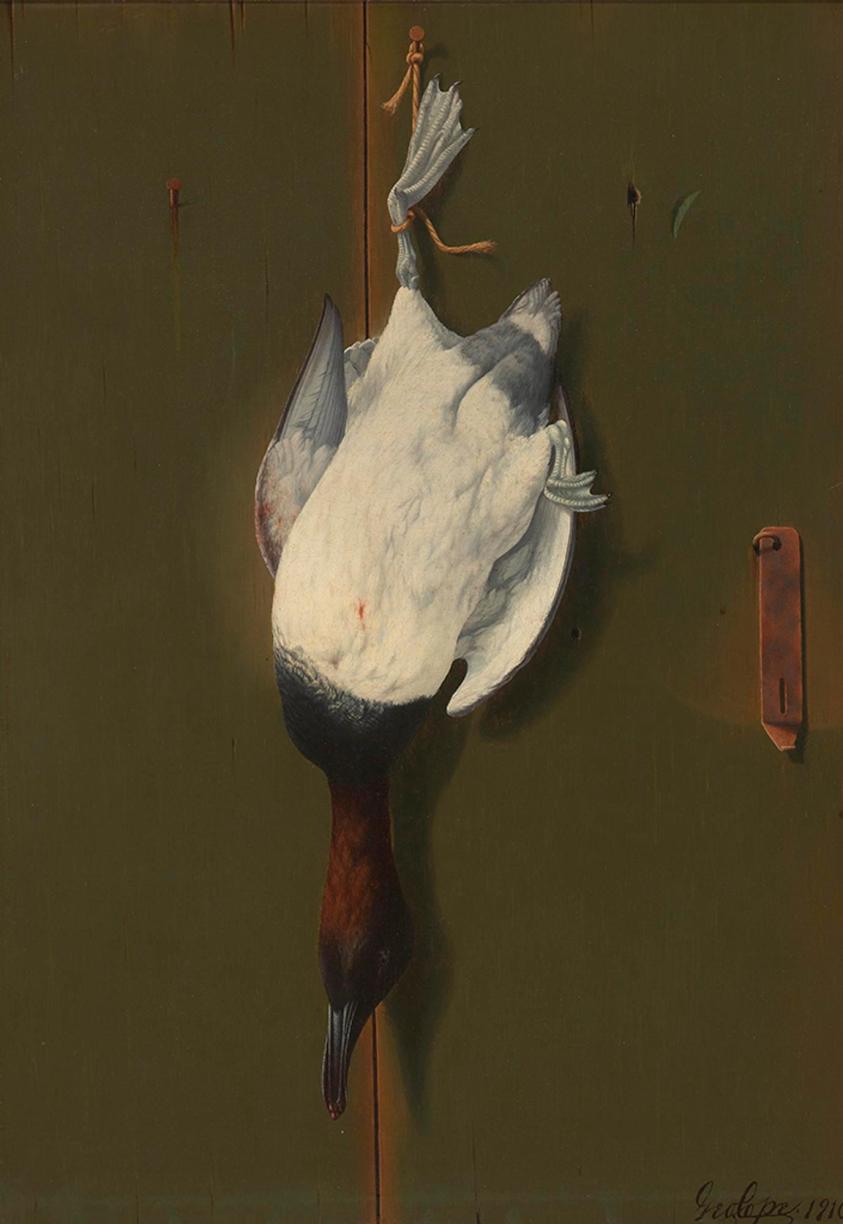
Artist:
George Cope
(American, 1855 - 1929)
A Day's Bag
Medium: Oil on canvas
Date: 1910
Dimensions:
23 × 16 1/4 in. (58.4 × 41.3 cm)
Accession number: 80.3.8
Label Copy:
George Cope was born in 1855 near West Chester, Pennsylvania, and though he spent most of his life in the Chester County area, between 1881 and 1883 he lived in Philadelphia. It was during this period that he began to work in still life and, in particular, trompe l’oeil. "A Day’s Bag" is an example of this clever painting style that fools the eye into believing that a two-dimensional painting is actually a three-dimensional object.
In "A Day’s Bag," Cope utilizes trump l’oeil effect in a painting about hunting, a popular theme among gentlemen patrons who pursued hunting on their weekend retreats. Paintings of this subject were in high demand by Cope’s patrons, who would hang paintings, such as "A Day’s Bag," in their studies, libraries, and offices.
In this image, a canvasback duck hangs by one leg from a string tied to a nail in a green door. Small blood stains from bullet holes are visible on the bright white feathers of the duck’s breast. The image is made to look realistic with the light source coming from the front left, which casts a shadow of the duck onto the green door. The green painted door is also realistic, with its two nails and one nail hole, which has splintered slightly, perhaps from the nail being removed. Notice also how the green paint has been worn away from certain parts of the door, for example behind the latch that appears to have swung back and forth causing the wear, and from the seam in the wood, where the door may fold upon closure.
George Cope was born in 1855 near West Chester, Pennsylvania, and though he spent most of his life in the Chester County area, between 1881 and 1883 he lived in Philadelphia. It was during this period that he began to work in still life and, in particular, trompe l’oeil. "A Day’s Bag" is an example of this clever painting style that fools the eye into believing that a two-dimensional painting is actually a three-dimensional object.
In "A Day’s Bag," Cope utilizes trump l’oeil effect in a painting about hunting, a popular theme among gentlemen patrons who pursued hunting on their weekend retreats. Paintings of this subject were in high demand by Cope’s patrons, who would hang paintings, such as "A Day’s Bag," in their studies, libraries, and offices.
In this image, a canvasback duck hangs by one leg from a string tied to a nail in a green door. Small blood stains from bullet holes are visible on the bright white feathers of the duck’s breast. The image is made to look realistic with the light source coming from the front left, which casts a shadow of the duck onto the green door. The green painted door is also realistic, with its two nails and one nail hole, which has splintered slightly, perhaps from the nail being removed. Notice also how the green paint has been worn away from certain parts of the door, for example behind the latch that appears to have swung back and forth causing the wear, and from the seam in the wood, where the door may fold upon closure.